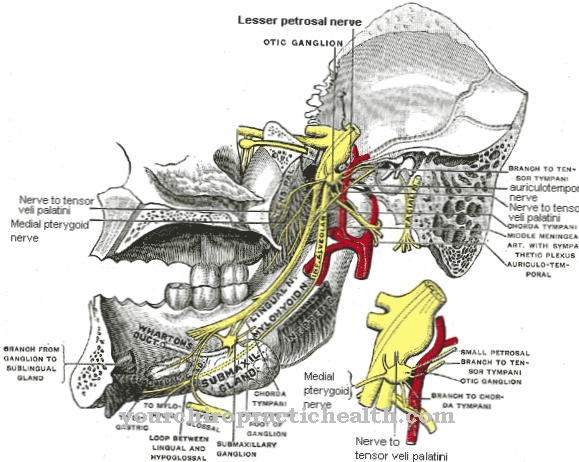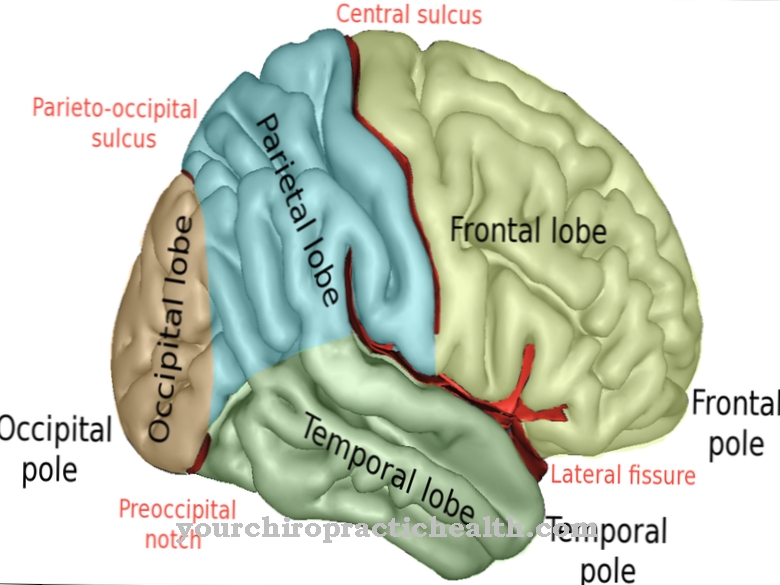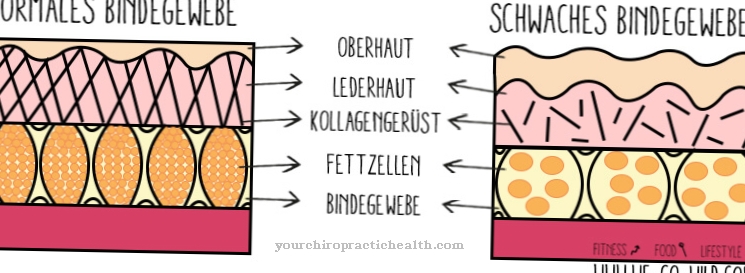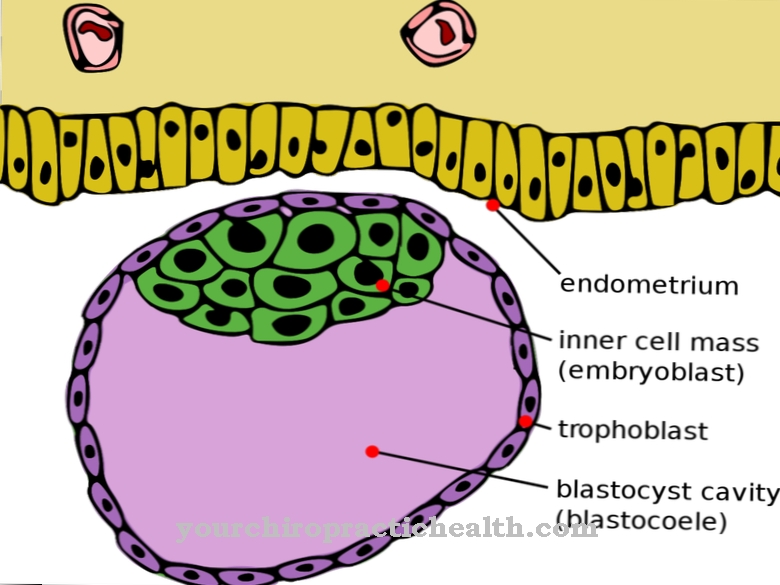The branch-like and often branched cytoplasmic processes of a nerve cell (neuron), through which information is received and impulses are passed on to the body, is known in technical terms as dendrit. This serves to absorb electrical stimuli and forwards them to the cell body (soma) of the nerve cell.
What is a dendrite?
In medicine, this area is assigned to histology, cytology, neuroscience and physiology. The synonym is Protoplasmic process. Dendrites are used for the primary absorption of stimuli. The action potentials within the dendrites can run in both directions. If a nerve cell is depolarized, the electrical state of excitation does not only spread in the axon (nerve cell process, also axillary cylinder, neuraxon), but also as a declining action potential in the dendrites.
This process, known as feedback, changes the reception conditions of the protoplasmic processes and affects the synaptic signal that subsequently arrives. The feedback leads to a stronger connection between the two nerve cells. If the impulse is triggered before the synaptic signal, this mechanism weakens the nerve connection. This process is of great importance for neural plasticity.
Anatomy & structure
The term dendrite is derived from the Greek language and stands for "tree-like". This designation gives an indication of the anatomy and structure of the dendrites in the form of heavily branched cytoplastic processes that arise from the cell body (perikaryon) of the nerve cells. A nerve cell is composed of an average of 1 to 12 dendrites, most of which have a smooth surface.
However, there are also nerve cells whose protoplasmic processes have spines or spinous processes. These often function as an input region for receiving synaptically transmitted information, which is then evaluated in the perikaryon and then summed up and forwarded to the other nerve cells via the axon. This stimulus transmission only takes place in the event of a potential overrun in order to prevent overstimulation. The neuraxon is surrounded by lipid-rich cells that electrically isolate it from the environment. These cells are also known as Schwann cells, which are made up of high-fat myelin.
These are interrupted in regular sections by the Ranvier tie rings. The excitation flowing through the axon is passed on through different voltages on the non-isolated Ranvier cord rings within the individual cord rings. By means of the dendrodendritic contact, electrical signals can also be transmitted from one dendrite to another. The dendro-axonic contact transfers the signals from the dendrite to the axon and the dendro-somatic contact transfers the signals from the dendrite to the perikaryon.
The dendrites have a shorter and more branched anatomy than the axons. Their origin is broad, with each branch tapering, while nerve cell processes have a constant diameter over their entire length. The branching pattern depends on the type of nerve cell. As a result, the branches of the individual nerve cells can be so diverse that dendrites and axons cannot be easily distinguished.
Under the light microscope, neurofibrils can be seen in the plasma of the dendrites and Nissl clods up to the first junction. With the help of the electron microscope, actin filaments, microtubules, ribosomes, endoplasmic reticulum (protein synthesis) and possibly Golgi apparatus can be seen. Axons, on the other hand, appear without an endoplasmic reticulum and Golgi apparatus. The dendrites grow out of the cell body (dendritogenesis) often after axogenesis. Doctors differentiate between six different types of nerve cells: pyramidal cells, Purkinje cells, amacrine cells, stellate cells, granular cells and primary sensory nerve cells in the spinal ganglion.
Function & tasks
The most important function of the dendrites is to absorb stimuli and transmit them to the cell body. The transmission of electrical excitation is called afferent in technical terms, as it always takes place in the direction of the nerve cell. However, it is entirely possible that the transmission within the dendrites also runs in a different direction.
This reversed directional guidance always takes place when an action potential is formed in the axis cylinder, which is distributed backwards in the form of a feedback to the individual dendrites. This mechanism has the effect that the synapse and the signals transmitted to this point are influenced and the two nerve cells involved are closely coupled to one another. This process is important for “neural plasticity”, which shows that the nerve cells can adapt and remodel depending on the frequency of use. The nerve cells serve as a sophisticated network and information carrier.
This exchange of information takes place via the synapses on the basis of chemical messengers (neurotransmitters) using presynaptic end buttons. These transmit the information to the nerve cells. The number of synapses plays a more important role than the number of nerve cells. However, not all nerve cells are created equal, as the neurons differ in how they function. When the nerve cells are exposed to a stimulus, for example a touch or a taste sensation, the state of excitation occurs, which forwards the information received.
You can find your medication here
➔ Medicines for paresthesia and circulatory disordersDiseases
Every day we are exposed to a large number of overstimulation. These stimuli have to be passed on to the brain. The human brain is the "control center" for all automatically running processes of sensory perception (seeing, hearing, smelling, tasting) as well as independent and perceptual processes, for example the targeted movement of the body.
The task of transmitting stimuli is carried out by the cells (neurons) found throughout the body. The human brain alone has a trillion nerve cells and is able to store an infinite amount of information by recombining the connections between the individual nerve cells.Without this perfectly functioning network of nerve cells, which filters out the overstimulation that occurs every day, people would hardly be able to live due to too many sensory impressions, as they would not be able to process them.
For example, we react to touch. The dendrites pick up the stimulus from this contact through a widely branched system of branches and pass it on to the cell body (soma) of the nerve cells. The axon hillock, which merges into the axial cylinder, is located on the soma. In the axon mound, the states of excitation absorbed by the dendrites add up. However, these are only passed on in the event of a potential overrun in order to prevent overstimulation.
The dendrites act as a filter that enables us to have an orderly sensory perception without the discomfort of overstimulation. If this "filter system" does not function properly, we would not be able to perceive the aforementioned contact and react to our environment after processing the signals transmitted through the dendrites.
Typical & common nerve diseases
- Nerve pain
- Nerve inflammation
- Polyneuropathy
- epilepsy













.jpg)

.jpg)
.jpg)











.jpg)